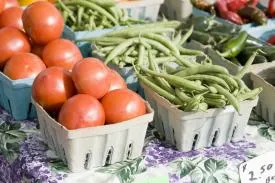Emily Coll
Farm, Food, and Enterprise Development
Iowa State University Extension and Outreach
ecoll@iastate.edu
Farmers manage many spinning plates like any other business owner: production, accounts receivable/payable, marketing, customer service, research and development and more. And there is only so much time in the day.
The Farm, Food and Enterprise Development Program for Iowa State University Extension and Outreach was awarded a grant from the USDA Agricultural Marketing Center to develop enterprise (crop) budgets that incorporate market costs associated with different market channels like farmers’ markets, community-supported agriculture, wholesale, retail and institutional. This research is critical for farm decision-making, because most farmers clearly understand production costs, but many times do not factor in marketing costs. Without these, they can’t make accurate decisions on profitability per enterprise.
It’s logical to assume that whatever market channel provides the highest premium for a product is the most profitable channel. But that may not be the case. Let’s break it down.

A farmer sells her/his products at a farmers market but has been approached by the local school district. Production costs are proportionally equal across all enterprises no matter the market channel. But what about the marketing costs? The farmers market may require different product packaging, booth supplies, market fees, different insurance requirements, mileage to and from the market (which may incur more vehicle maintenance and insurance coverage). Also, sales at the farmers market are dependent on the activity at the market. Weather, competing markets and events, and other things may affect potential sales. But with a school district, costs for labor, mileage, vehicle and packaging may be lower--and no market fee. But some marketing costs remain, and sales prices are a bit lower.
Let’s dive deeper into selling to an institutional market like the local school district. This market provides steady cash flow because the farmer knows how much the school orders and will receive that money no matter the weather. A school district with enrollment of 2,000 serves an average of 1,400 meals a day (including breakfast).
In one real-life example, a school district purchases 62 six-packs (~2 lb.) of romaine lettuce. Each pack costs them $19.81, and about 25% of it is thrown out upon arrival because it is damaged and brown. A local farmer could use this information to get in the door --and charge a little more. Adding 25% to $19.81 comes to $24.76 per six-pack, or $4 a head. This is the same or a higher unit price than the farmer gets at the farmers market. A farmer might use this information to decide that investing in a high tunnel could pay off within two seasons of growing romaine.
Some products won’t be profitable selling to schools. Some school districts will pay more for these products because of their freshness and appeal to the students. Consider cherry and grape tomatoes. The school district in the example above pays $1.75 a pint for cherry tomatoes. At the farmers market the farmer sells them for $3 a pint. A $1.25 difference may seem like a lot. But the farmer can only sell 10 pints at the market per week. She can sell 696 pints each month to the school.
The difference in marketing costs follows:
|
Costs (26 weeks) |
Market Fees |
Mileage |
Labor |
Booth Suppl. |
Vehicle maint. & ins. |
Packaging |
Value of time off |
Total costs |
Total Receipts |
|
Farmers market |
$420 |
$905 |
$11,700 |
$150 |
$70 |
$78 |
$2,730
|
$15,663/20=$783 |
$780 |
|
School |
$0 |
$260 |
$4,160 |
$0 |
$115 |
$125 |
$0 |
$4,660 |
$7,308 |
(This example assumes a 26-week market season and a six-month school meal season. Cherry tomatoes will not be ready to sell at all 26 weeks of the market, nor for six months to the school. This assumption was made to make calculations more straight-forward.)
Labor rate used is $15 per hour. Labor includes the time to harvest all crops for the farmers market (20 total crops). We can’t compare marketing costs accurately without including all enterprises the farmer brings to the market. Harvest and post-harvest labor were calculated at 20 hours per week. The time spent driving and at the farmers market also must be calculated. We used $15/hr. X 7 hours’ drive time and market time of three hours (loading in and out, selling and tracking accounts receivable) X 26 weeks. Labor input for the school was calculated at 20 minutes to load/unload twice per week. The time to drive to the school was not calculated because the farmer came to town for another purpose (running errands, etc.). We calculated mileage at the federal rate of $0.58 per mile.
Packaging cost was higher for the school. We calculated it at $0.03 X 696 units X 6 months = $125. For the farmers market, cost was $0.03 per package per number of packages (10 per week). And the farmer only packaged 10 of the 20 enterprises (crops), for a cost of $0.03 X 10 X 10 X 26 weeks = $78.
Vehicle maintenance cost was higher for the school, because the mileage is higher overall and accounts for one more oil change than for the farmer’s market.
We divided total costs for the farmer’s market by 20, because that is the average number of enterprises the farmer brought to market each week.
So, what’s the bottom line in this example? Profit from the school was $2,648 and selling at the farmers market resulted in a loss of $3 for the season.
The intent of this article is to illustrate how diversifying a farm’s operations is imperative to financial solvency and profitability. It is the same concept that is used in finance: diversifying your investments will help weather any down-turns in any one fund or investment channel.
If you are interested in getting help analyzing your farm business profitability, please contact me, ecoll@iastate.edu, 515-296-0586.
